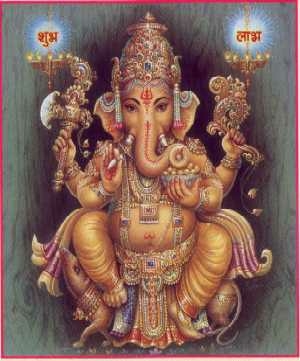


 Shree Ganesh is a god Which is worship first among all the other god.In every Auspicious ceremony worship of God Ganpati(Ganesh) is must.According to Hindu Religion ganpati is "Vidhna Harta" God means it Prevents Obstacles to comeing across Auspicious ceremony & provides Success to his Devotees. so to get success in each and every field of life God Ganesh is worshiped First and foremost.
Shree Ganesh is a god Which is worship first among all the other god.In every Auspicious ceremony worship of God Ganpati(Ganesh) is must.According to Hindu Religion ganpati is "Vidhna Harta" God means it Prevents Obstacles to comeing across Auspicious ceremony & provides Success to his Devotees. so to get success in each and every field of life God Ganesh is worshiped First and foremost.